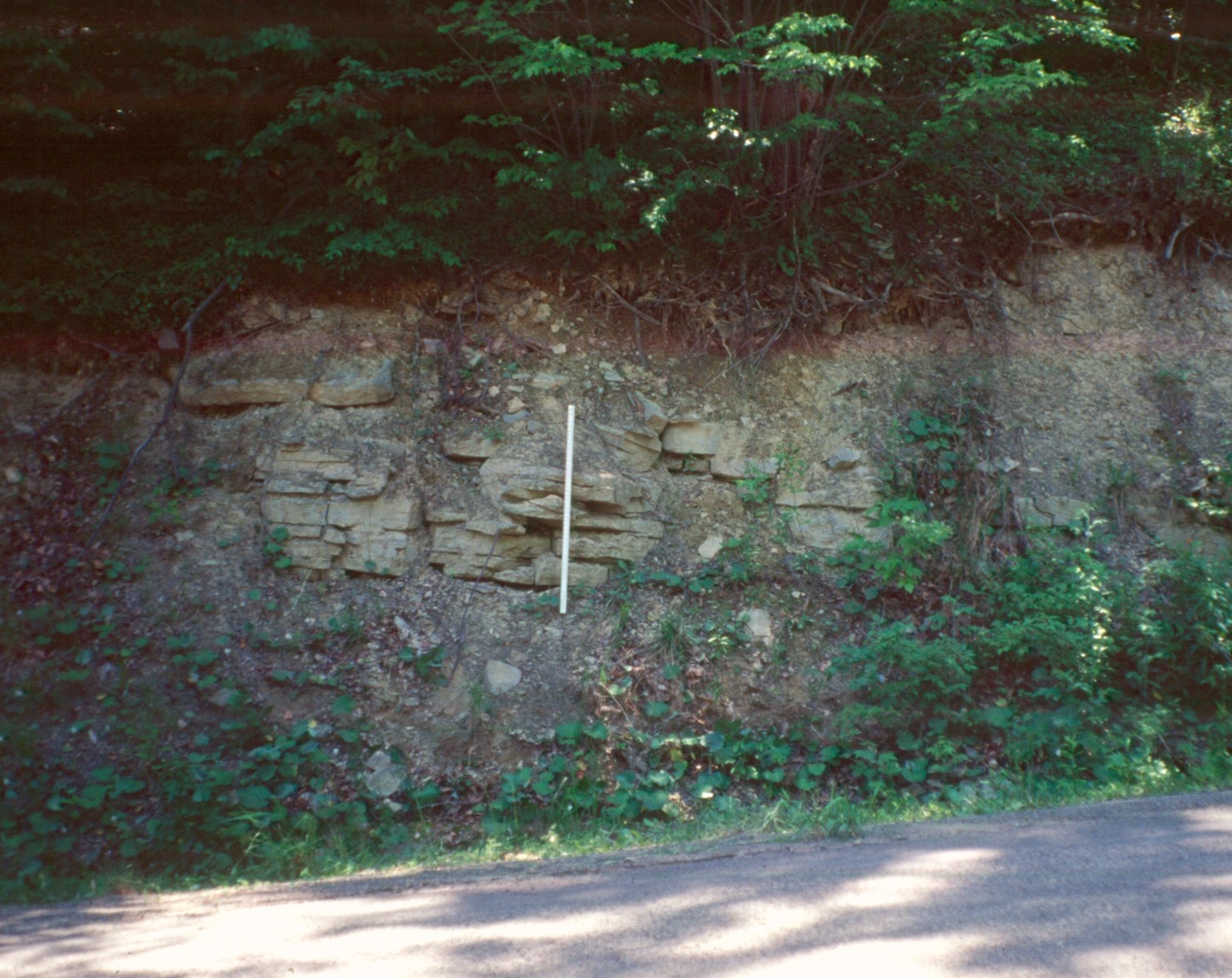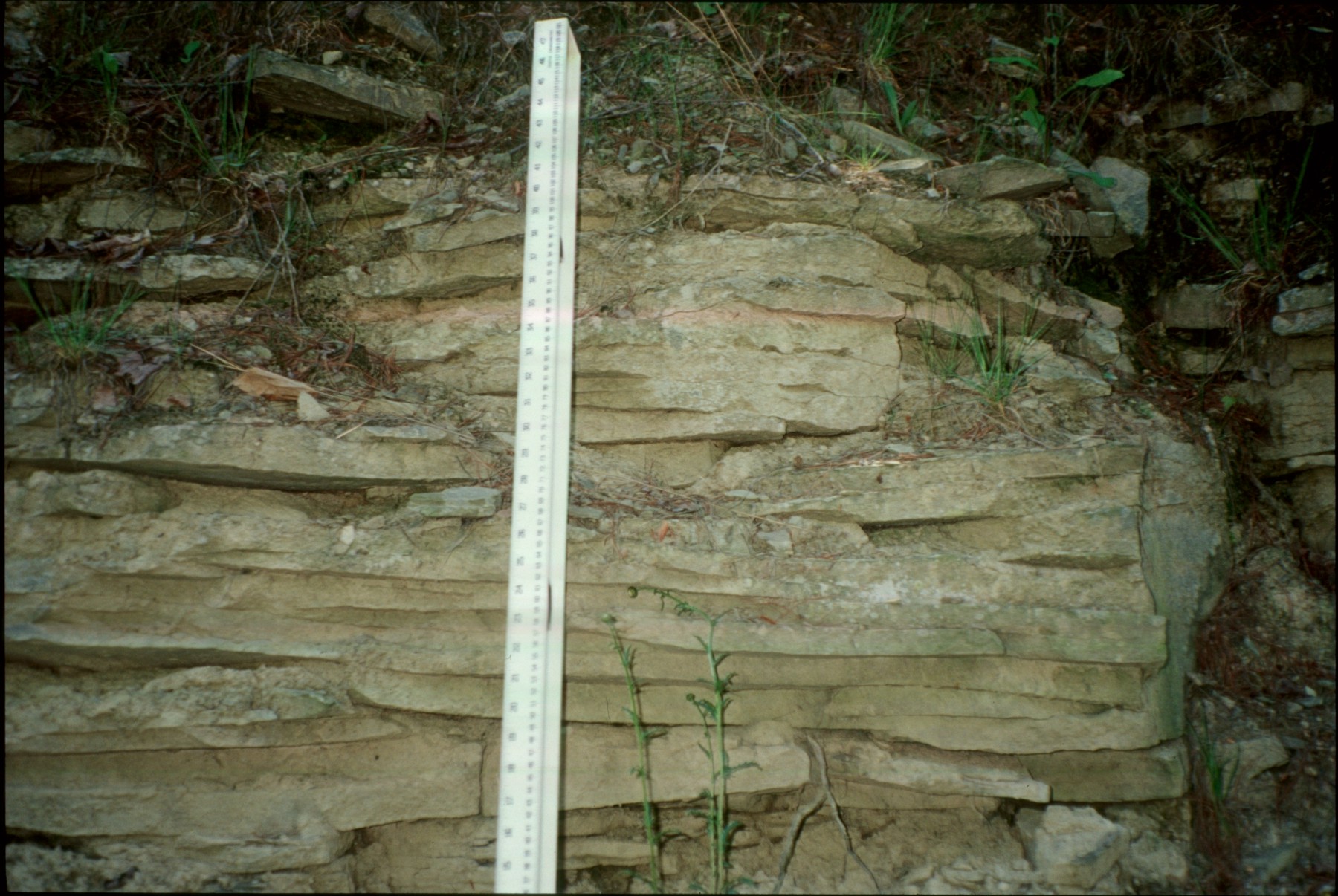Whitesville Formation (Woodruff, 1942)
Lithology. The Whitesville Formation is comprised on interbedded gray shales, silty shales, and thin fine-grained sandstones, similar to the interbedded sections in Machias Formation but sandier than the interbedded sections of the Wellsville Formation. The Whitesville also contains 4 sandstone lenses that were not laterally extensive, and range up to 5 meters in thickness. The grain size of the sandstone lenses ranges from fine-grained to coarse-grained. The sedimentary structures observed in the sandstone lenses differ from the storm-deposited sandstones that dominated the stratigraphic section from the Machias Formation up to the Hinsdale. Whereas beds containing SCS were observed in the thick sandstone lenses of Whitesville Formation, there were also beds containing straight-crested asymmetric ripples, large 2-dimensions dunes, festoon ripples, and solemarks of grooves and striations. Fossils and coquinites were not commonly observed in the sandstone lenses.
Ichnology. The interbedded section of the Whitesville Formation contains a low-diversity Cruziana ichnofacies consisting primarily of Planolites. The sandstone lenses contain a mixed Cruziana and Skolithos ichnofacies, with Planolites, Arenicolites and Skolithos commonly found.
Interpreted Depositional Environment. The Whitesville Formation is interpreted as being deposited close to storm-wave base, in the upper offshore area. The sand lenses were interpreted as being deposited well above storm-wave base but below fair-weather wave base. The less pronounced storm-influence on the sandstone lenses and interbedded sections can be interpreted as either increased sea level, below storm-wave base, however, the presence of coarser-grained sandstones and infrequent occurrences of SCS makes this seem unlikely; or the climate during the Late Famennian was not as stormy as the earlier part of the Conneaut Group deposition. The sandstone lenses were interpreted as being deposited in lower shoreface depositional environment, probably as barrier bars.


Thick sandstone beds (outcrop view and close-up) within the Whitesville Fm., outcrop along Ackerman Rd., Belmont quad.